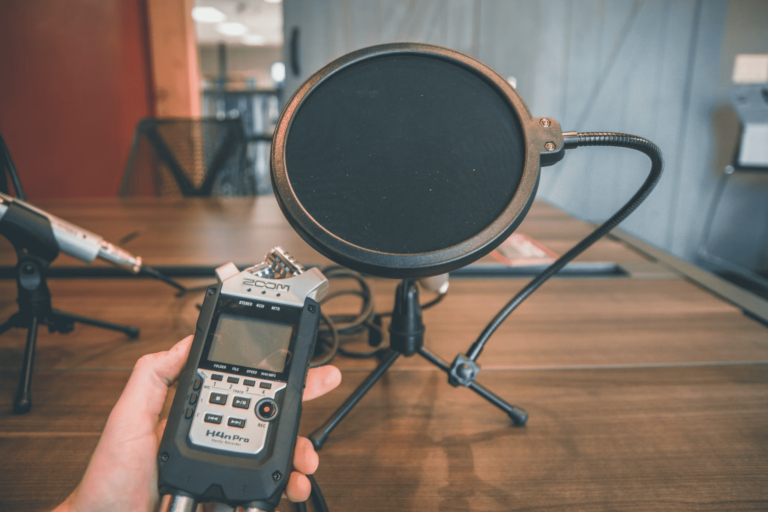Music tracks and sound effects are something nearly every video creator is looking for.
With the right track and sound effects, creators tend to make their videos more relevant, expressive and appealing for the viewers. Thus, the demand is high.
In a market like this, building a sound effects library can be rewarding.
But what does it take? What should a person know before going all-in for it?
This article briefly describes various factors one must know before and for building a sound effects library. So, if that’s your motive, we got your back.
What Is a Sound Effects Library?
As you are looking for ways to build a sound effects library, we’d like to assume you have certain information and know-how of what a sound effects library and what purpose it serves.
For the sake of revision, a sound effects library is a database a.k.a collection of recorded audio samples and sound effects ranging across various genres and types such as raindrops, vinyl scratches, thunder noises, etc.
What Is a Sound Effects Library Used For?
The answer is simple – a sound effects library provides creators a vast range of sound effects that they can use in their content. So, whether you are a music producer who wants to give a raindrop effect in the back of your track, or a movie creator looking to add thunder claps for a scene, or a podcast creator looking for an intense background track to set the tone in your podcast, in a sound effects library, you may find every type of sound and track you need for your content.
How to Create a Sound Effect Library?
Before building a sound effects library, let’s take a look at how to create individual sound effects. This should ease out the process for us.
Concept
Every sound effect library has a specific taste and concept that it revolves around. This works similar to the concept of genres in soundtracks. This concept can be about anything. For example, this can be a theme, a type of sound aesthetic or type of sounds that can work together or sound good together.
You can also think of it like categories that you’d organize your sound effects in.
Creation Methods
Once you have identified the concept for your sound effects library, it’s time to start creating.
You can refer to the following three steps to make your sound effects library:
Step 1: Structuring
The structure of your library refers to the number of sound tracks you want to keep in every category in the library. For example, if you have 50 sound effects to start with, you should know the number of tracks that each of your categories will have.
Say, you have 15 rain sounds, 10 thunder sounds, 10 engine revving sounds and so on. Preparing a list of these sound effects against the category you will put them in will help ease the process.
Step 2: Recording and Editing
Recording is the most important and most enjoyable step. However, to get it right, one must ensure to follow professional sound recording tactics.
How you record a sound effect will largely depend on the type of sound you record. Also, the equipment you use to record sound effects should be top-notch to ensure high quality and low noise.
Apart from that, if you are using software instrument tracks or midi controllers to play and record sound effects, make sure the notes are placed correctly in time, and all the undesired frequencies have been EQ’d out.
Also, while editing, you may feel the need for making multiple sound effects out of the one sound you recorded.
This often happens when we EQ sounds. The same track will sound different in different EQ settings.
For example, by eliminating extreme high frequencies from a raindrop loop, you can change the way the raindrops feel to the ear. Similarly, by EQing lower frequencies, you can make the rain sound more aggressive – and both these sounds can be useful to creators.
Step 3: Quality Check
Before publishing your sound effects, make sure the sound quality is at par with the standards you wish to maintain.
In an unclean sound effects mix, various elements may collide with each other, creating a phasing effect, or extreme noise.
If the results are different from what you wished for, go back to your producer and refine the parts that don’t sound right.
Beatoven for Sound Effects and Soundtracks
Making sound effects can be challenging for many reasons. Beatoven is a solution that can make things a little easier for you.
Whether you are looking for motivation to create sound-effects or simply exploring genres to add more soundtracks to your library, Beatoven may help you. Beatoven is an AI-based tool that helps creators make music without having to produce it, in under 10 minutes.
And if you need to make changes, you are free to do so. Click here to get
started.
Conclusion
Creating a sound effects library can be a fruitful yet laborious job. However, with the right guidance and tips, the process can be made a little easier. In this blog, we discussed various important pointers that can help you successfully build a sound effects library.
Hopefully, this was helpful.
Additionally, if you are looking for a place to start making your own sound effects, Beatoven is the place for you. Create your first sound today and get 15 minutes worth of free downloads every month.

